About Our Food
Camping 101
Broadly speaking, there are three common kinds of camping food:
'WET' FOOD
These are meals that have been pasteurised in their packets but not dried – they range from the soups you can find on shelves (not the fridge) in supermarkets, to our home made pesto, the Maharajah’s Choice Indian meals and our First Night Fabulous selection from Tasmania’s Sirocco South.
They’re mostly cooked by pouch method: dunk packet of food in boiling water. Hum for 6–10 minutes. Pull out pouch, cut off top, pour into dish.
Pros: The ingredients have been cooked together so the flavours have melded. Done well, they’re restaurant-quality delicious.
Cons: They’re a few hundred grams heavier per meal, and unless their ingredients are chosen and prepared carefully, they can get a bit mushy (think tinned asparagus, as opposed to fresh).
FREEZE-DRIED FOOD
Freeze-dried meals are usually made by combining individual freeze-dried ingredients (peas, meats, milk powder, tomato powder etc) into meals with spices and herbs for flavour.
The most common examples of these are the Back Country and Outdoor Gourmet brands – staples of camping shops nationally. They’re both made by a New Zealand company. We’ve got meals from them and from Tasmanian company Strive.
They’re cooked two ways: either by tipping ingredients and a specified quantity of water into pot, bringing to boil then stirring over simmer for 10 minutes, or by pouring boiling water into their bag, stirring all to combine well, waiting 10–15 minutes, then opening and eating.
Freeze dried snacks – such as Forager Fruits – are also fun; light, chip-crisp, but with a delicious fresh flavour.
Pros: When the zombies come, these are the guys. They last for up to five years, and they’re also the lightest choice – no liquid has been left behind (it all gets added back in cooking) so a meal for one usually tops out at less than 130g. And you can often cook them in the bag, so if you’ve got some boiling water, you’re good to go.
Cons: In many (though not all) cases the meat component comes in geometric shapes a substance that’s meat flavoured, but not actual meat. Also, if you don’t combine the water into every cranny you get left with unhappy crunchy surprises. And because of the powdered nature of many of the ingredients, they can tend towards the filling yet bland end of the spectrum – top note tomato soup, bottom note salt. Careful selection required.
DRY AND DEHYDRATED FOOD
Dehydrated meals can either be made by combining individual dried ingredients, by cooking a full meal and dehydrating it, or some combination of the two. The dehydrating process (low heat, air circulation) takes 8–12 hours and removes 80–90% of the food’s moisture.
Dehydrated food tends to be more homemade than industrial (although fruit leathers are an example of dehydrated commercial food) and most of the meals we make are based on prepared and dehydrated ingredients.
To cook them, the ingredients are put in a pot with water, brought to the boil and simmered for 8–10 minutes.
Pros: Dehydrated meals are lighter than wet food, though 20–30g heavier than freeze-dried per meal. They take less water and cook faster than freeze-dried meals and because ingredients have been cooked to combine, the meal tastes “foodier” (think cooked ginger and garlic compared to garlic powder and ginger powder).
Cons: Some things dehydrate better than others (for example we use freeze dried meat [actual meat, not UFOs {Unidentifiable Foodlike Oblongs}] in our meals.) The meals don’t last as long as freeze-dried – about 6–12 months is typical. And they can’t be cooked in a bag, so they need at least a pot and a stove. If they’ve been dehydrated unevenly, it’s possible for some of the meal to get soppy while some’s still undercooked, so it can be a bit fiddlier.
WHAT'S BEST?
It depends… on everything – taste, texture, ease. To give you just one example; to make Amelia’s Penne Bolognese we:
- Make a tomato passata, preparing and cooking fresh onions and garlic, adding freshly chopped tomatoes and finishing off with fresh parsley, then blending and dehydrating.
- Add freeze-dried Australian lean beef mince and some freeze-dried tinned tomatoes for bonus saucy texture.
- And the Gail & Ian™ herb mix (no surprises here – parsley, basil, salt, pepper …).
- Pack it all together with the penne, seal it, label it, wait for you to order it.
- Send you out with shaved fresh parmesan, because we can, and because it’s just better.
And that’s just one meal. You should ask about our Pear and strawberry crumble…
Our philosophy
Here at Three Capes Gear & Gourmet we don’t think – as many people do – that hiking food has to be uniformly bland. There’s a place for meals that are long on shelf life and a little short on taste, but we reckon it’s okay to expect more – something that’s more like food, more tasty – and that’s where we set our bar. You can make yummy food for adventures; you just have to accept that it’ll take a little more effort to produce and won’t have a doomsday-prepper shelf life.
We’ve chosen freeze-dried meals from other makers that we think pass the “kitchen table test”: if it tastes okay in the light and warmth of a cheerful kitchen, it’ll taste great in the wild at the end – or beginning – of a solid day’s walk
And we set ourselves the kitchen-table test as well. Three Capes Gear & Gourmet branded food is made and packed in small batches in Hobart. A number of our meals – for instance home made pesto, Amelia’s bolognese and Pear and strawberry crumble – include fresh Tasmanian ingredients that we prepare, cook and dehydrate from scratch. Other meals – most breakfasts, and a growing range of dinners – are assembled from a mix of fresh vacuum-sealed, custom-dehydrated or quality freeze-dried ingredients.
Whenever possible – and that’s most of the time – we source ingredients from local growers and suppliers. Early on we used garlic grown in a Hobart community garden for our pesto and home made hummus; now, we’re a bit too big, so we buy Tassie garlic from a variety of suppliers in season. We buy the fresh apples, pears and strawberries for our desserts at Salamanca and Farm Gate markets. Most of our dried ingredients come from Eumarrah Health Foods and freeze-dried from Forager Foods of Red Hills, in northern Tas.
And then there’s the treats. Our mate Mic Giuliani of Sirocco South cooks our range of First Night Fabulous meals. We source cheddar cheese from the milkers and makers at Pyengana Dairy. Sophie Creek of Elly’s Gourmet Confectionary creates the salted caramel bang and popcorn we sell and we get fudge from international chef of fun and mystery Steve XXXXX. Our coffee’s roasted by the caffienated decadents at Zimmah.
Getting to know these people and providing a space to showcase their wares is what living in Tassie’s all about: it’s a small-town-friendly place stacked with people doing big-city-cool stuff.
We’re going to keep making new meals and finding new food friends and suppliers, but we’re not going to set the bar lower. We’ve eaten a lot of food to get to the options we make and sell. We’d rather stick to a smaller offering of tasty meals than offer every available option, and send you out with a meal we think’s not yummy enough. Consider us your crash-test eaters and walkers: we’ve taken the hits so you don’t have to. No pack’s gone unworn, no jacket untested, no packet untasted, no technique untried in our quest to find you the best stuff. Have we succeeded? You be the judge.
First Nations people walked the beautiful island of Lutruwita (Tasmania) for many millennia before European colonisation – and continue to seek recognition and Makarrata in this State. The land that we work in and and that you will walk on Turrakana (Tasman Peninsula) is the Country of the Pydairrerme people. We acknowledge and pay our respects to Tasmanian Aboriginal elders past and present and thank them for their continuing care, knowledge and guardianship of the plants, creatures and stories of this amazing place.

Port Arthur,
Tasmania,
Australia
PHONE: 03 6108 1320
MOBILE: 0468 343 244
EMAIL: info@3cgg.com.au
 Gluten Free
Gluten Free Vegetarian
Vegetarian Vegan
Vegan




